"Let's Talk About" Series, Blog, Herbalism
Foraging for Rose Hips in Winter
Amber Shehan • December 15, 2017
The winter months are dark and dreary and foraging opportunities are few and far between. Rose hips are a bright treat that is easy to harvest and enjoy in tea, medicines, or homebrew.
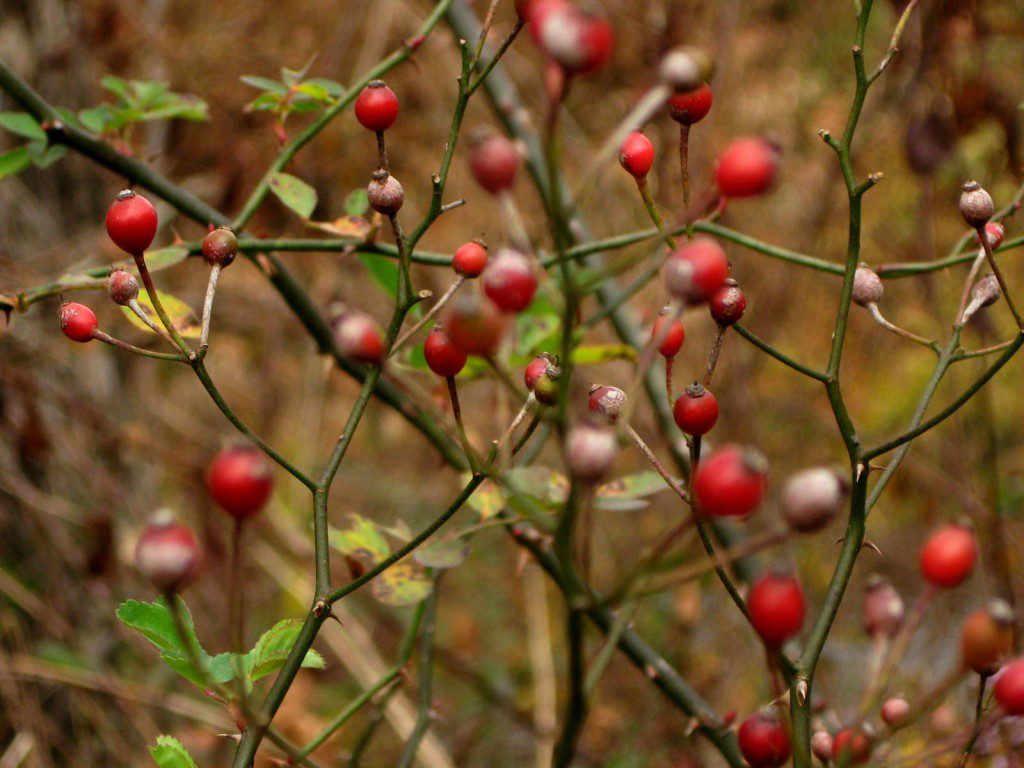
Roses are the gift that keeps on giving!
In spring, the scent of their flowers permeates the breeze, and I forage petals for food and medicine. The blooms continue throughout the summer and it is a delight to watch bees and pollinators dive in and out of the roses like enthusiastic paratroopers.
In the autumn and winter, we receive the gift of rose hips. There are not many things available to forage once winter arrives. I prefer to allow the land to lay dormant and prepare itself for the coming warmth and times of bloom and blossom, but collecting rose hips is an exception to that rule. (Chickweed, too!)

Rose hips are the red fruits left over after the flowers die off. That is one reason why I tend to collect just the petals from the wild rose bushes during their blooming times instead of cutting off the flowers at the stem: it means more hips on the bush later in the year!
I have wild rose bushes, commonly known as dog roses, all around my hedgerow. I spotted a giant clump of them in the hayfields behind us when we went sledding the other day…something to go back and investigate when I’m not dragging a makeshift sled uphill in the deep snow! The wild roses make small hips, but they work just as well as the larger ones often found on roses with large flowers.
There’s also a mind-blowingly beautiful pale pink rose that I discovered on the property this spring. The smell caught my nose and led me straight to the fenceline to find an antique rose with flowers bigger than my fist! It is not a native rose and must have been planted by previous residents quite a long time ago. It looks like it will make some giant rose hips, but it isn’t healthy and needs to be tended to encourage growth. It got a good pruning already!
What are Rose Hips good for?
Rose hips are a great source of vitamin C and they grow in areas where citrus does not. Avoid scurvy and help support your immune system with a lovely cup of tea! They also taste quite nice. Rose hips do not taste like roses but instead have a fruity, sour tang to them like citrus fruit or hibiscus flowers.
Rose Hip foraging tips
Do not harvest flowers or hips for edible reasons if you think that they may have been sprayed with pesticides or otherwise treated. For example, plant shops and nurseries often treat their roses, as do general landscapers. It is important to know the area you are foraging very well, which is why I keep many of my foraging activities limited to the boundaries of my yard!
Roses have thorns, so either be ready to have sore, bleeding hands if you are like me and refuse to wear gloves. I haven’t found a pair that fits my small hands well enough to keep me dextrous. My roses and I get along well, but no matter how cautious I am, the thorns always leave their marks on my skin. I consider it part of the price for the sweet medicine I am gathering, or put on gear like sleeves from Farmer’s Defense.

My goal with harvesting rose hips is to dry them for use later, so I go for the ripest hips. They are a little darker and begin to wrinkle as they dry on the stem. I don’t cut the hips off, nor do I pull them with force. I find that if I walk the yard a few days each week and visit the roses, I can softly touch a clump of rose hips and with a very gentle tug, the ripe ones will happily come loose and jump into my hand.
However, if you want to use rose hips for fresher purposes like making jelly or baking, it might be worth your while to collect the fresher hips that don’t pull off as easily.
Rose hips tend to be sweeter if they’ve been through a frost, in my experience, but that doesn’t keep me from harvesting them whenever they appear to be ripe. You can usually count on getting small handfuls of hips a few times a month from October through January.
Drying and using rose hips
Since I harvest hips often and in small quantities, I just toss them onto the drying baskets in my apothecary – a cool, dry place. After a few days, I can start to pick out the dried rosehips that are ready to be stored in a jar or tin.
Rose hips can be used whole in tea blends, but if you use crushed rose hips, you MUST be sure to get rid of the tiny, itchy hairs inside of them. No matter the size of the hips, those hairs are unpleasant to drink or breathe, and are a natural source for itching powder! You don’t want that in your digestive tract, do you?
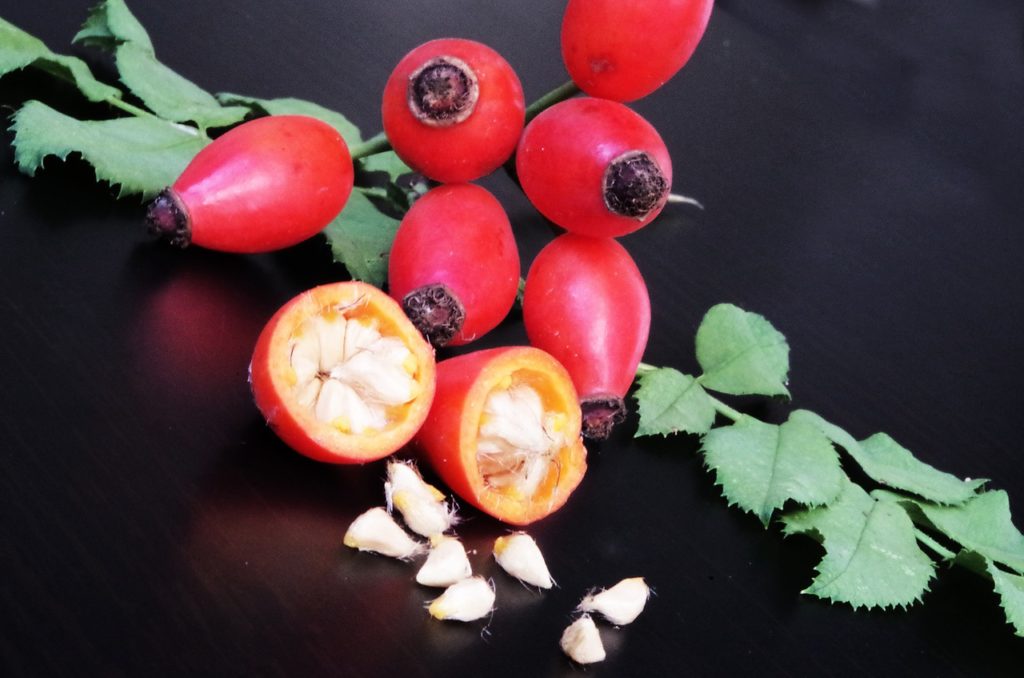
To remove the hairs when you make jelly or tea, strain the liquid through a few layers of cheesecloth. This should also catch the seeds, which contain a small bit of cyanide in them. They’re only dangerous if they are crushed and a large quantity is ingested. A coffee filter will work as a strainer but they clog up much faster than cheesecloth or a clean rag.
Lovely Greens gives another method of removing hairs from rose hips when you are processing a lot of dried rose hips using a food processor and some clever sifting! This version gives you the benefit of choosing to keep and use the itching powder for your own completely innocent, non-nefarious purposes.
For more about foraging Rose Hips:
- Collen from Grow Forage Cook Ferment has a great post on foraging rose hips
- The Herbal Academy – Rose Hips: The Floral Superfood
- Mythic Medicine – Decay & Renewal: Rose Hips in the Cemetary
Awesome Rose Hips Recipes:
Get updates from Pixie's Pocket: brewing and herbs in your inbox:
Posted In "Let's Talk About" Series, Blog, Herbalism
Tagged: foraging, herbalism, herbs, let's talk about, rose, rose hips, wild flowers, wildcrafting
Amber Shehan
Hi! I'm Amber Pixie, and this is my site. Enjoy the recipes, information, posts, and please feel free to message me if you have questions!

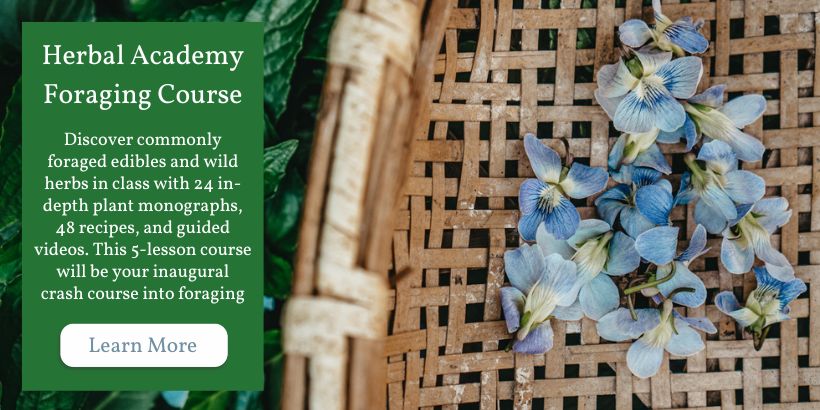

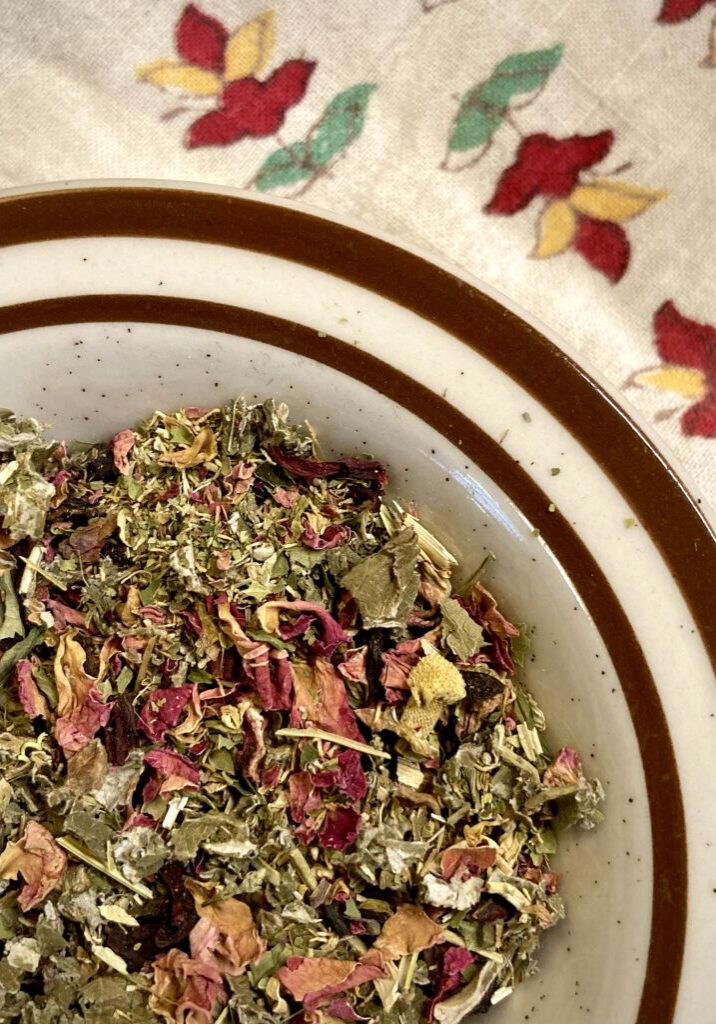
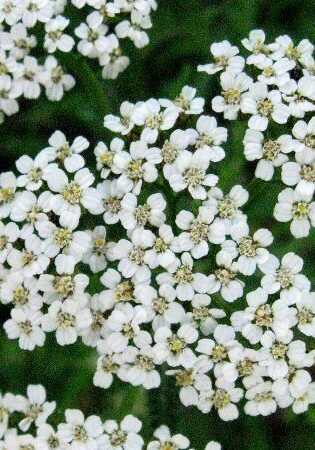

I bite the ends off sometimes.
You can put them in the crock pot at low anda add liquid usually water and let them simmer. It takes awhile with rose hips.Strain the liquid off it can take awhile. and dry the remnants to add to a special fire. Crockpot low is the ideal temperature
That sounds lovely! I bet it smells so nice in the house and tastes good. 🙂
Which Rose’s grow the best rosehips?
I have only ever harvested the ones I mentioned in the post – little wild dog roses and a few regular large roses whose names/cultivars I don’t know! I like them all but I suppose it depends if you want to make fresh foods from them (juicy big hips would do best) or dry them for tea and medicine (the little ones work best for this for me!)
I hope that helps!